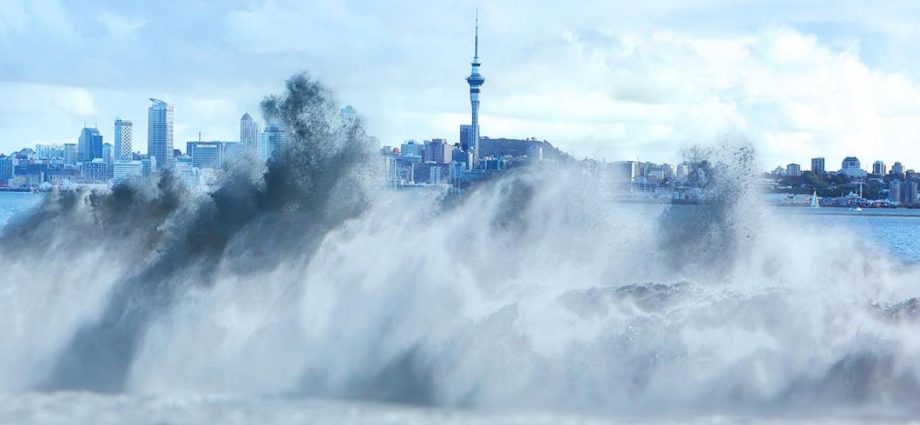PHOTO: NEWSHUB
A fresh perspective on tsunami vulnerabilities in Tāmaki Makaurau/Auckland has emerged with the introduction of the updated Hazard Viewer/Te Mapi Tirotiro Pūmate.
SEE HERE
The Auckland Emergency Management (AEM) and Auckland Council jointly presented their recently released tsunami risk map on Thursday, shedding light on coastal and inland flood risks associated with tsunamis.
Head of operations at AEM, John Cranfield, urged residents to explore the new Hazard Viewer/Te Mapi Tirotiro Pūmate tool online. Cranfield noted, “Our refined tsunami wave modeling provides more precise insights, revealing that the tsunami risk along much of the Auckland coastline is less than previously estimated.”

The Auckland area most at-risk from tsunami damage
The maps encompass the entirety of the Tāmaki Makaurau region, including Aotea Great Barrier Island and the Hauraki Gulf islands.
Cranfield explained that the maps feature easily understandable red (coastal) and yellow (inland) zones at risk. “The red zone indicates the area requiring evacuation in the face of a coastal or marine tsunami threat,” he stated. “The yellow zone marks the area necessitating evacuation in the event of a land tsunami threat.”
Utilizing modeled earthquakes from actual fault lines across the Pacific, AEM and Auckland Council created the maps. The model replicates the generation of tsunami waves and their journey across the ocean, considering the impact of islands and seafloor topography.
Why is Auckland Council still allowing people to build on flood plains? | WATCH
Sharon Stewart, Councillor and chair of the council’s Emergency Management Committee, expressed satisfaction that the updated maps reveal a reduced risk area. However, she emphasized the importance of public awareness regarding the persistent threat of tsunamis. “Despite the reduced risk in areas around the inner Manukau, Kaipara, and Waitematā Harbours, caution is still advised for regions more exposed to the Pacific Ocean, such as Aotea Great Barrier Island and Auckland’s northeastern coastal communities,” she cautioned.
Stewart highlighted the ongoing necessity for preparedness in the event of a tsunami emergency, reinforcing that timely evacuation remains crucial. Tsunami warnings are disseminated through various channels, including the National Emergency Management Agency’s website, social media platforms, AEM’s online presence, and traditional news outlets on radio and television. Additionally, emergency mobile alerts may be issued to notify individuals in the event of a tsunami.
SOURCE: NEWSHUB














